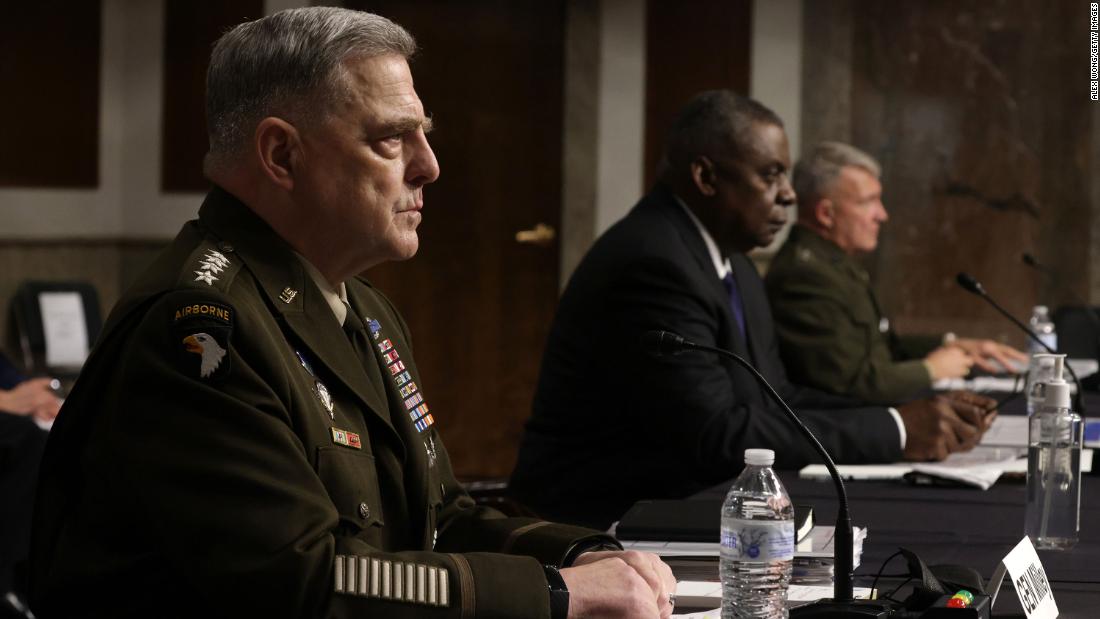Lawmakers grill Defense Secretary Austin and Gen. Milley on the Afghanistan withdrawal and chaotic Kabul evacuation
The State Department is working to facilitate the departure of about 100 American citizens and legal permanent residents ready to leave Afghanistan, a senior State Department official said Monday.
The official stressed that the number “changes every day” as people change their minds or “take advantage of other options they may have to get out.”
The official told reporters on a call that the State Department is “constantly touching base” with US citizens believed to still be in Afghanistan, as well as other governments and air craft carriers to try to arrange charter flights.
The Department is also in touch with private groups organizing charter flights to try to advise them on complications associated with these efforts, the official said, telling reporters that there have been “challenges” with “every charter that has come to a USG reception point, principally in Doha.”
“A bunch of people came out that that we weren’t expecting, that don’t necessarily know who they are and we don’t necessarily know if who they say they are it lines up with who the charter operators indicated they were,” they said.
“We’ve had stowaways. We’ve had ground crew that climbed on the plane. We’ve had any number of people get off those flights who are not on the manifested don’t necessarily have a sense of who they are or why they particularly think they would qualify,” they added.
“In some cases we’ve had unaccompanied minors traveling without parents, traveling without a legal guardian, and some big question marks about why they were on the aircraft,” the official said.
The official noted that the State Department is working to see who in that population “legitimately can say they’re at acute risk” – describing that as “people who can demonstrably demonstrate that they’ve got active threats against them, they’ve got people looking for them” – “as opposed to people who simply are uncomfortable or fear the unknown that comes with the Taliban taking control of government and the state.”
“Once we’ve got a precise look at that population, we can then better evaluate and ensure that senior leaders are have the opportunity to look at the range of implications associated with moving those people into the states or with holding them out and putting them through a regular refugee resettlement process in which some of them might come to the states and some of them might go on to other countries that collaborate with UNHCR and the International Organization for Migration,” they said.
The official described the Taliban’s “unpredictability regarding who is permitted to depart” as the biggest impediment to the departure of US citizens and others from Afghanistan. The absence of regular commercial air service is another big constraint, the official said.
“There’s a range of contact and dialogue ongoing with the Taliban, particularly in Doha, with the remaining members of the Taliban political commission who are based there,” the official said.
![]()


